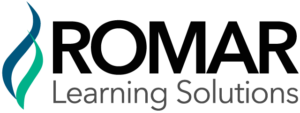
As you experiment with new instructional approaches and refine your training programs, you may find it beneficial to explore the learner’s perspective and assess their understanding of the content. Here are a few ways to assess a learner’s understanding and gain meaningful feedback.
Surveys/Interviews
One way to measure training effectiveness is by conducting post-training surveys or interviews. This is a level I assessment in the Kirkpatrick ROI of learning model. While assessments allow you to determine how much of the material learners absorbed, surveys or interviews provide helpful insights into how you can improve your training programs.
Survey questions may include:
- After completing this training, do you understand the subject matter? If not, where do you lack clarity?
- What exercises, tools, and resources were the most helpful to your learning experience?
- After completing this training, are you confident you can reach/exceed performance goals?
Quizzes/Assessments
Another way to ensure learners understand training materials and retain new information is by offering post-training assessments or quizzes at key points in the learning. This is a level II assessment in the Kirkpatrick ROI of learning model. By quizzing participants on their new knowledge and skills, you can determine just how effective your instructional delivery and materials are.
These assessments may include hypotheticals with real-world applications, technical questions, sequence prompts, open-ended questions, and more.
Furthermore, gathering and comparing results from all participants will allow you to determine whether there is specific subject matter that requires additional instruction.
Measure the Behavioral Change
If you can measure the learner’s behaviors before the training and then again after the training, you will be able to determine whether the training changed their behavior positively. This is a powerful assessment of learner development because it looks at the actual change within the learner. This is a level III assessment in the Kirkpatrick ROI of learning model. The key to measuring behavior change is to think about it before you implement the training so you can get a reading of the behaviors before the training.
The best assessor of the learner’s behavior change is someone who has no stake in the outcome. That usually means the trainer who is implementing the training isn’t the best assessor. Sometimes the learner’s manager can fulfill this function.
Productivity/Performance Rates
The best way to measure training effectiveness is to track the learner’s post-training productivity and performance. This is a level IV assessment in the Kirkpatrick ROI of learning model. Have their performance rates increased since completing their training?
Employees are often required to meet certain productivity or performance goals (sales made, revenue generated, units produced, etc). Reflect on each learner’s performance before the training and compare these figures to their post-training performance.
If your teams are struggling to meet their performance goals, they may require additional training. Interested in developing a learner-centric training program that supports results-driven upskilling? Contact the professionals at Romar Learning Solutions!
Don’t forget to follow us on Facebook, Instagram, Twitter, and LinkedIn.




